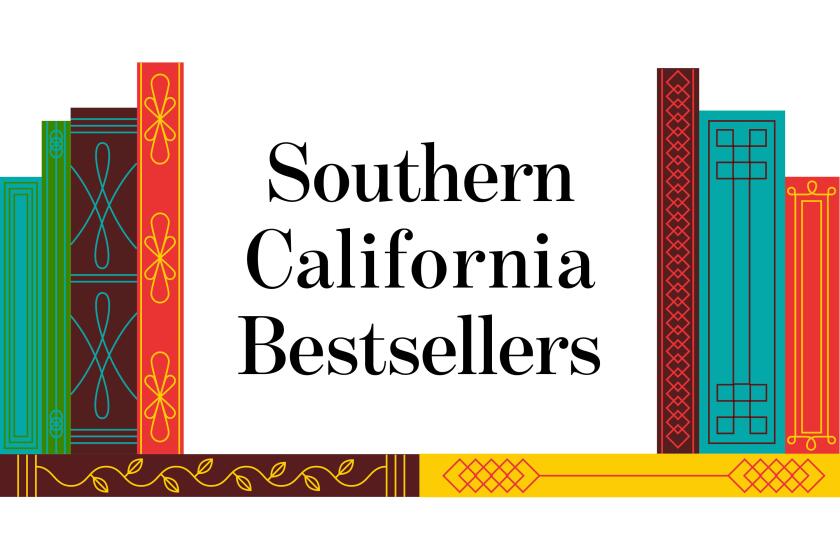Road From Psychologist to Novelist Never Ends
- Share via
I’m often asked how a child clinical psychologist became a novelist. It didn’t quite happen that way.
For as long as I can remember, I’ve been drawn toward both the arts and science, especially biology and psychology. I began drawing compulsively at 4, writing short stories and poetry at 9 and devouring books about human behavior soon after that.
I learned to produce on deadline as an undergrad at UCLA, where I worked as the editorial cartoonist for the Daily Bruin and penned a weekly column, arts reviews and journalistic pieces. In my senior year, I served as a Bruin editor, and a friend and I coauthored a (mercifully) unpublished novel that won a Samuel Goldwyn Literary Award. This prize is often a steppingstone to the film business, but I loved books and had no interest in writing screenplays. By that time, I was engaged to be married and on my way to grad school in clinical psychology at USC.
I interned and served a postdoctoral fellowship at one of the most marvelous medical institutions in the world, Childrens Hospital of Los Angeles, and joined its staff and the faculty at USC School of Medicine. I founded and directed a program aimed at helping children with cancer and other serious diseases and their families, and this led me to some fascinating avenues of research: pain control, pediatric neuropsychology, behavioral compliance, anxiety and sleep disorders, the comparatively new field of psychosocial rehabilitation. I was fortunate to work with a group of exceptional people, and we were instrumental in establishing the model for psychosocial rehab that remains in place two decades later.
During my years at Childrens, I published two books on psychology, dozens of scientific articles, short stories and op-ed pieces, while continuing to collect rejection slips for my novels. In 1981, I left the hospital to go into full-time private practice and to give fiction one last stab. I modeled myself after Arthur Conan Doyle, who created the Sherlock Holmes stories while waiting for medical patients who never showed up. Fortunately, my office was a bit busier, but working late at night in my garage, I completed what was to be my first published novel, “When the Bough Breaks.” The book wasn’t purchased for several years because the topic of child abuse was deemed uncommercial, but was finally published in 1985. My advance payment came out to around three bucks an hour, but I was thrilled--vindicated after all those years of struggle.
Miraculously, “Bough” became a word-of-mouth bestseller, and I continued to write novels while practicing psychology. In addition to conducting therapy, I served as a consultant to Superior Court and learned quite a few things about the legal system, many of them unsavory. I published three bestsellers while maintaining a busy practice until the demands of the two jobs became incompatible--as a novelist I was expected to tour, but I found it difficult to leave town when patients depended on me. In 1988, I decided to wind down my practice. This took 2 1/2 years because I had to wait for all my active patients to be well. This inspired the first line, and the theme, of my seventh novel, “Private Eyes”: “A therapist’s work is never over.”
Though I no longer see patients, I do consult to other therapists and I remain on the USC faculty and teach, occasionally, at the graduate level. I also try to keep up with professional journals and recently completed my first psychology book in nearly two decades--”Savage Spawn: Reflections on Violent Children”--to be published this fall by Ballantine’s Library of Contemporary Thought. Having four kids of my own led me to write a couple of children’s books as well.
Though I joke about having been a failed writer with a really good day job, the truth is I never would have traded instant bestsellerdom for the opportunity to work as a psychologist. As corny as it sounds, I really enjoy helping people--when I finished a grueling day of clinical work, I knew I’d done good. Writing fiction’s the best job in the world, but it is, essentially, narcissistic, and I suppose a part of me considers it somewhat trivial. (Though, in a fascinating and immensely gratifying twist, my novel “Devil’s Waltz” was instrumental in saving the lives of several children because of its portrayal of a rare form of child abuse called Munchausen by Proxy Syndrome.)
Confidentiality prevents me from ever writing about real patients, but I’d like to think that my experiences as a psychologist have helped inform my novels with a special authenticity. Having worked with thousands of children and families, perhaps I can bring something special to bear when exploring my favorite theme: family psychopathology in Southern California.
Of course, fiction needs to transcend textbook description, and I never set out to write a message book. The joy of writing fiction is making stuff up, and my primary goal is to create a page-turning thriller. Nevertheless, various “social issues” seem to creep into my books, because I write about things that frighten and concern me.
As a psychologist, I spent years trying to learn about the rules of behavior.
As a novelist, I’m fascinated with the exceptions.
More to Read
Sign up for our Book Club newsletter
Get the latest news, events and more from the Los Angeles Times Book Club, and help us get L.A. reading and talking.
You may occasionally receive promotional content from the Los Angeles Times.









